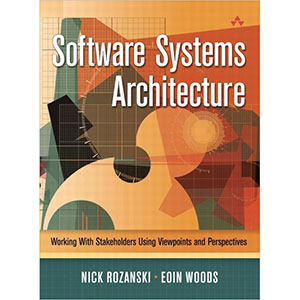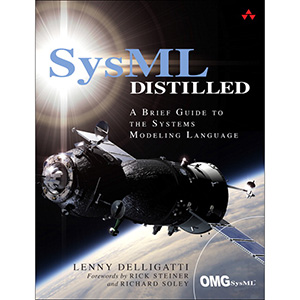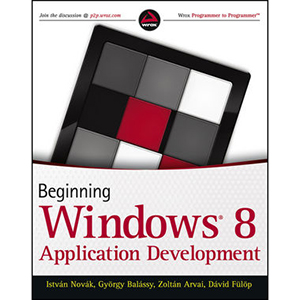Software Systems Architecture

Software Systems Architecture is a practitioner-oriented guide to designing and implementing effective architectures for information systems. It is both a readily accessible introduction to software architecture and an invaluable handbook of well-established best practices. It shows why the role of the architect is central to any successful information-systems development project, and, by presenting a set of architectural viewpoints and perspectives, provides specific direction for improving your own and your organization’s approach to software systems architecture.
With this book you will learn how to
- Design an architecture that reflects and balances the different needs of its stakeholders
- Communicate the architecture to stakeholders and demonstrate that it has met their requirements
- Focus on architecturally significant aspects of design, including frequently overlooked areas such as performance, resilience, and location
- Use scenarios and patterns to drive the creation and validation of your architecture
- Document your architecture as a set of related views
- Use perspectives to ensure that your architecture exhibits important qualities such as performance, scalability, and security
The architectural viewpoints and perspectives presented in the book also provide a valuable long-term reference source for new and experienced architects alike.
Whether you are an aspiring or practicing software architect, you will find yourself referring repeatedly to the practical advice in this book throughout the lifecycle of your projects.
A supporting Web site containing further information can be found at www.viewpoints-and-perspectives.info
Table of Contents
Chapter 1. Introduction
PART I: ARCHITECTURE FUNDAMENTALS
Chapter 2. Software Architecture Concepts
Chapter 3. Viewpoints and Views
Chapter 4. Architectural Perspectives
Chapter 5. The Role of the Software Architect
PART II: THE PROCESS OF SOFTWARE ARCHITECTURE
Chapter 6. Introduction to the Software Architecture Process
Chapter 7. The Architecture Definition Process
Chapter 8. Scope, Concerns, Principles, and Constraints
Chapter 9. Identifying and Engaging Stakeholders
Chapter 10. Identifying and Using Scenarios
Chapter 11. Using Styles and Patterns
Chapter 12. Producing Architectural Models
Chapter 13. Creating the Architectural Description
Chapter 14. Validating the Architecture
PART III: THE VIEWPOINT CATALOG
Chapter 15. Introduction to the Viewpoint Catalog
Chapter 16. The Functional Viewpoint
Chapter 17. The Information Viewpoint
Chapter 18. The Concurrency Viewpoint
Chapter 19. The Development Viewpoint
Chapter 20. The Deployment Viewpoint
Chapter 21. The Operational Viewpoint
Chapter 22. Achieving Consistency across Views
PART IV: THE PERSPECTIVE CATALOG
Chapter 23. Introduction to the Perspective Catalog
Chapter 24. The Security Perspective
Chapter 25. The Performance and Scalability Perspective
Chapter 26. The Availability and Resilience Perspective
Chapter 27. The Evolution Perspective
Chapter 28. Other Perspectives
PART V: PUTTING IT ALL TOGETHER
29. Working as a Software Architect
Book Details
- Hardcover: 576 pages
- Publisher: Addison-Wesley Professional (April 2005)
- Language: English
- ISBN-10: 0321112296
- ISBN-13: 978-0321112293














